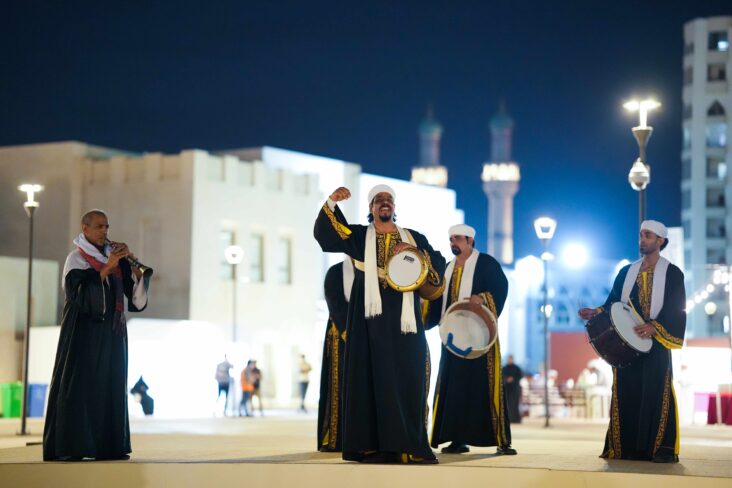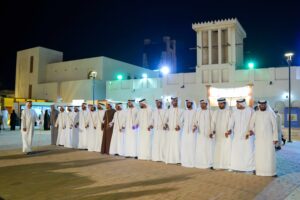Emirati Folk Art Shines At Sharjah Heritage Days

These are sounds that come to you from the past, yet they remain alive, as if born today, knocking on the doors of memories, taking you back to the time of our ancestors. They place you first on a boat sailing deep into the sea, leaving behind memories of the beloved and the longing of the hearts, or in the far deserts, where golden sands and tents are still pitched in the depths of the local human conscience.
All these images crowd your mind as you watch the graceful movements performed by the Emirati “Noban” troupe, led by Taher Ismail, during the Sharjah Heritage Days. The troupe’s voices blend with the rhythmic sounds of traditional instruments like the Ras, Wassat, and Shimboh, followed by the Manjour, made from goat hooves, worn by one of the troupe members in the shape of a skirt, creating a distinctive tone with its synchronized, vibrating movement.
Songs like “Jabruni ‘Ala Allah, Ya Nas, Ma Rahamuni,” “Ya Mahboub Saffer Al-Mawja,” “Shasha Nuba Sira Bilayl,” and “Ey Wallah Nuba Sira Bilayl” are part of the repertoire of the Emirati folk group. These songs collectively tell stories of love, longing, nostalgia, self-confidence, reliance on God, overcoming difficulties, and holding on to hope—traits that defined the traditional Emirati spirit and continue to connect generations with their beautiful past.
The rhythmic movements that imitate the actions of sailors or Nawakhitha in the local Emirati dialect were among the most distinctive features of the troupe’s dances. The men’s and women’s traditional costumes added an extra sparkle to the performance, making the visitors of Sharjah Heritage Days feel as though these artists were mimicking the waves, discovering their secrets, and writing their memories on the sails of ships, leaving lasting marks on a grand history and unique heritage.


